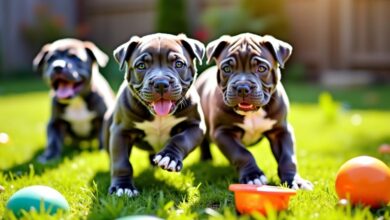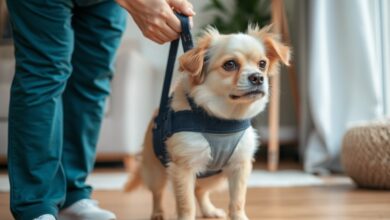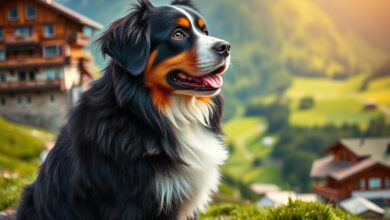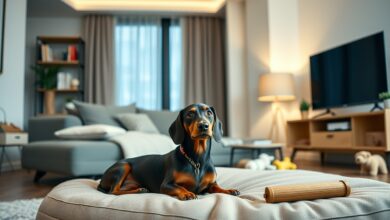Why Do Bloodhounds Have So Much Skin? Explained
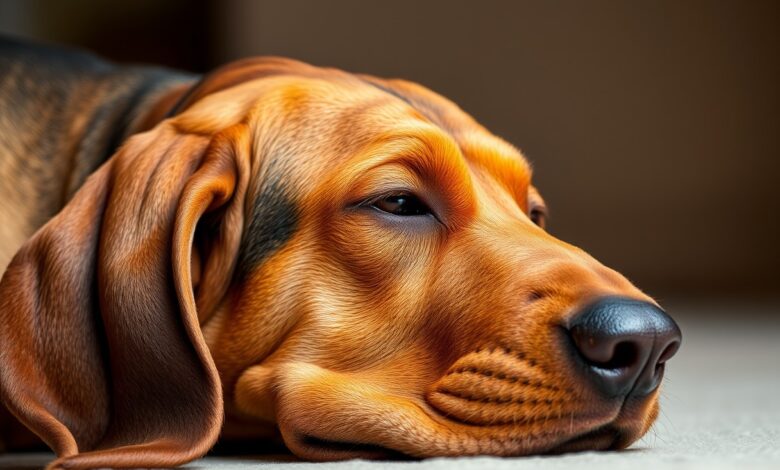
Just as you might marvel at the unique characteristics of various dog breeds, bloodhounds particularly stand out due to their impressive amount of skin. This distinctive feature is not simply a quirk; it serves specific purposes that are vital to their ability to track scents over long distances. The excess skin allows for greater scent collection, giving you insight into how these dogs have become masters in tracking and searching. Understanding this trait enhances your appreciation for bloodhounds and their incredible capabilities.
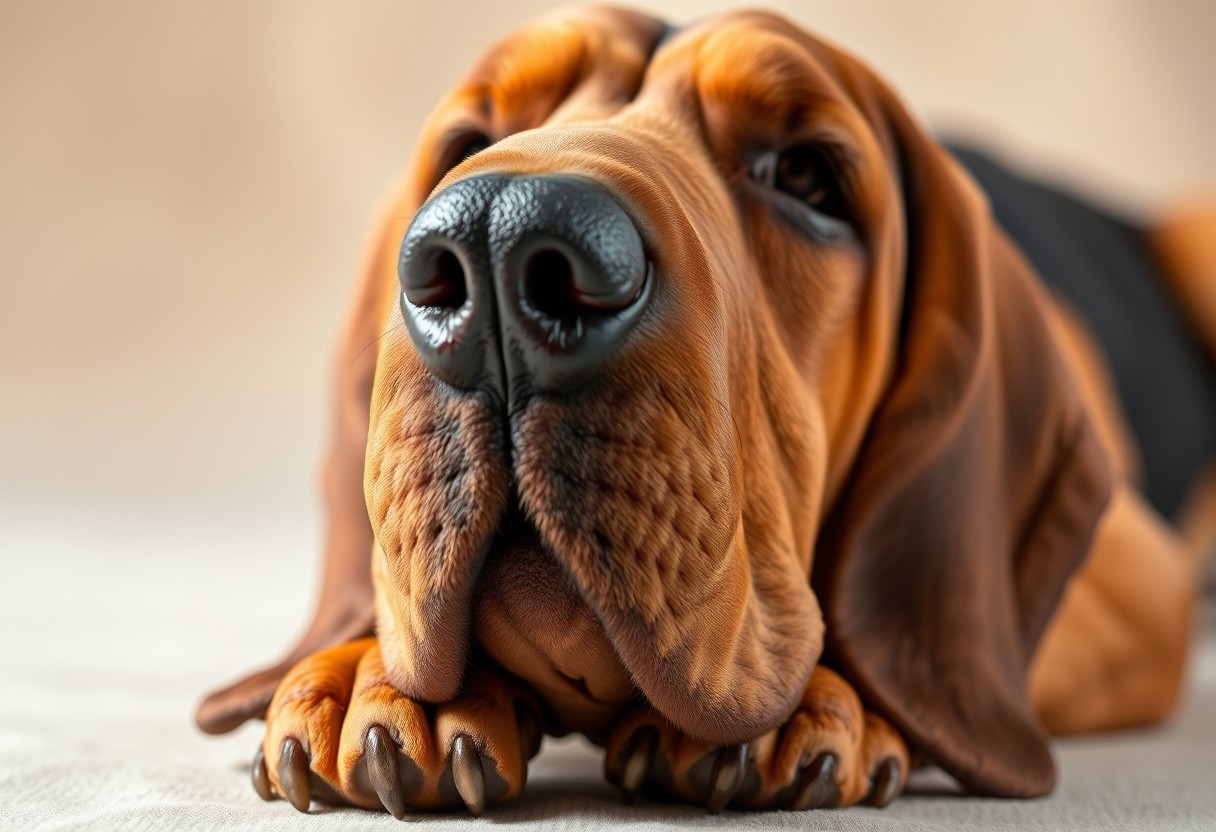
Key Takeaways:
- Enhanced Tracking Ability: The excess skin on bloodhounds allows them to gather more scent particles, which significantly enhances their exceptional tracking skills.
- Protection: The loose skin acts as a protective barrier against potential injuries while they navigate through rough terrains and dense underbrush during scent tracking.
- Facial Features: The unique folds and wrinkles in their skin help trap and hold scents closer to the nose, improving their olfactory capabilities.
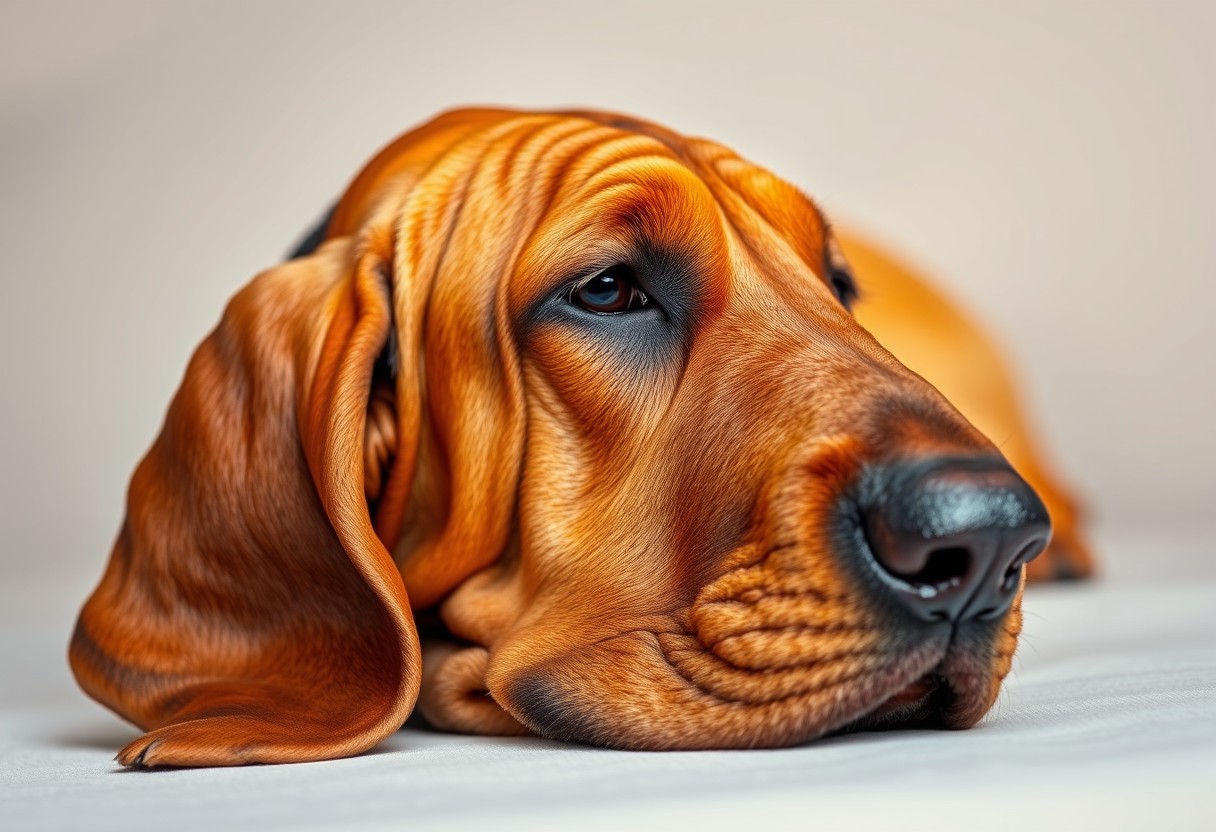
The Anatomy of Bloodhounds
Before delving into the fascinating physical features of bloodhounds, it’s important to understand their distinct anatomy, which sets them apart from other breeds. These powerful scent-tracking dogs possess an impressive combination of features, including exceptional olfactory receptors and an extensive amount of loose skin, which plays a crucial role in their ability to track scents over long distances.
Unique Skin Structure
Skin is one of the most noticeable characteristics of bloodhounds. Their loose, wrinkled skin not only contributes to their unique appearance but also serves multiple functional purposes, such as enhancing their keen sense of smell. This structure allows skin folds to trap scent particles, which aids bloodhounds in their tracking endeavors, providing them with invaluable information during searches.
Role of Skin in Tracking
The loose skin of bloodhounds plays a vital role in their tracking abilities. With numerous folds and wrinkles, their skin works almost like a built-in scent catcher, trapping odors and keeping them close to their noses. This anatomical advantage allows them to follow scents more effectively than many other breeds.
This anatomical feature is particularly significant when it comes to tracking. As you observe a bloodhound on the trail, you’ll notice how their wrinkles capture scent molecules, allowing them to pick up and differentiate scents with remarkable precision. The increased surface area of their skin contributes to a greater olfactory response, which is critical during search and rescue operations, making bloodhounds one of the most reliable dogs for scent tracking. Understanding this aspect of their anatomy helps you appreciate the depth of their tracking prowess and the unique adaptations that make them exceptional in their field.
Historical Background
Even in ancient times, Bloodhounds were highly regarded for their exceptional tracking abilities. Their lineage can be traced back to medieval Europe, particularly in the monasteries of Belgium and France, where they were bred by monks for hunting and tracking purposes. This historical significance sets the stage for understanding the unique characteristics, including their distinctively large amount of skin, that make Bloodhounds one of the most effective scent hounds.
Origins of Bloodhounds
With roots that can be traced back to the Middle Ages, Bloodhounds were specialized in hunting both game and scents left by people. They were initially known as “St. Hubert Hounds” after St. Hubert of Belgium, the patron saint of hunters. Their keen sense of smell and tracking instincts made them invaluable to medieval nobility, where they were employed for tracking down criminals and lost individuals.
Breeding Practices
Breeding practices for Bloodhounds have significantly influenced their physical traits, including their excessive skin. This was primarily done to enhance their scenting abilities. Breeding among the most skilled hounds resulted in the lineage that we see today, characterized by deep wrinkles and droopy skin that aids in the collection of scent particles.
Historical records indicate that responsible breeding practices focused on enhancing Bloodhounds’ tracking prowess often involved selecting the largest and most skilled dogs. This led to a heightened concentration of skin folds and wrinkles, designed to trap and retain scent, ultimately making them the exceptional trackers they are today. Understanding these practices not only illustrates the deliberate breeding approach but also helps you appreciate the unique physiology that aids in their legendary scent-tracking capabilities.
Sensory Capabilities
Despite their droopy skin, bloodhounds are not just adorable companions; they possess remarkable sensory capabilities that set them apart as exceptional scent trackers. Their unique anatomical features, including their loose skin, enhance their ability to detect and interpret scents, making them one of the leading breeds in search and rescue operations. Understanding these features can help you appreciate why bloodhounds are extraordinary in their olfactory performance.
Olfactory Sensitivity
Sensory capabilities in bloodhounds are primarily focused on their amazing olfactory sensitivity. These dogs have over 300 million scent receptors, compared to a human’s approximate 5 million. This profound sense of smell allows them to identify and differentiate countless aromas, helping them track scents over long distances. As a result, bloodhounds excel in roles that require tracking and detection.
Skin and Scent Detection
Any discussion of bloodhounds’ scent detection capabilities must acknowledge the role their skin plays. The flexible and abundant skin provides a greater surface area, which enhances the capture of scent particles. This allows the bloodhound to “scoop up” scents from the ground and the environment. Consequently, the combination of their sensitive noses and skin attributes results in unparalleled tracking efficiency.
Detection is paramount in the world of scent work. Bloodhounds possess unique skin features that not only give them a distinctive appearance but also serve a critical function in enhancing their tracking abilities. The combination of their loose skin and specialized nasal structures allows them to trap and retain scent particles, making it easier for them to follow trails. This ability is not just for entertainment; it has important applications in real-world scenarios like search and rescue missions and locating missing persons. By understanding how your bloodhound’s skin contributes to their scent detection prowess, you can better appreciate the role they play in various service areas.
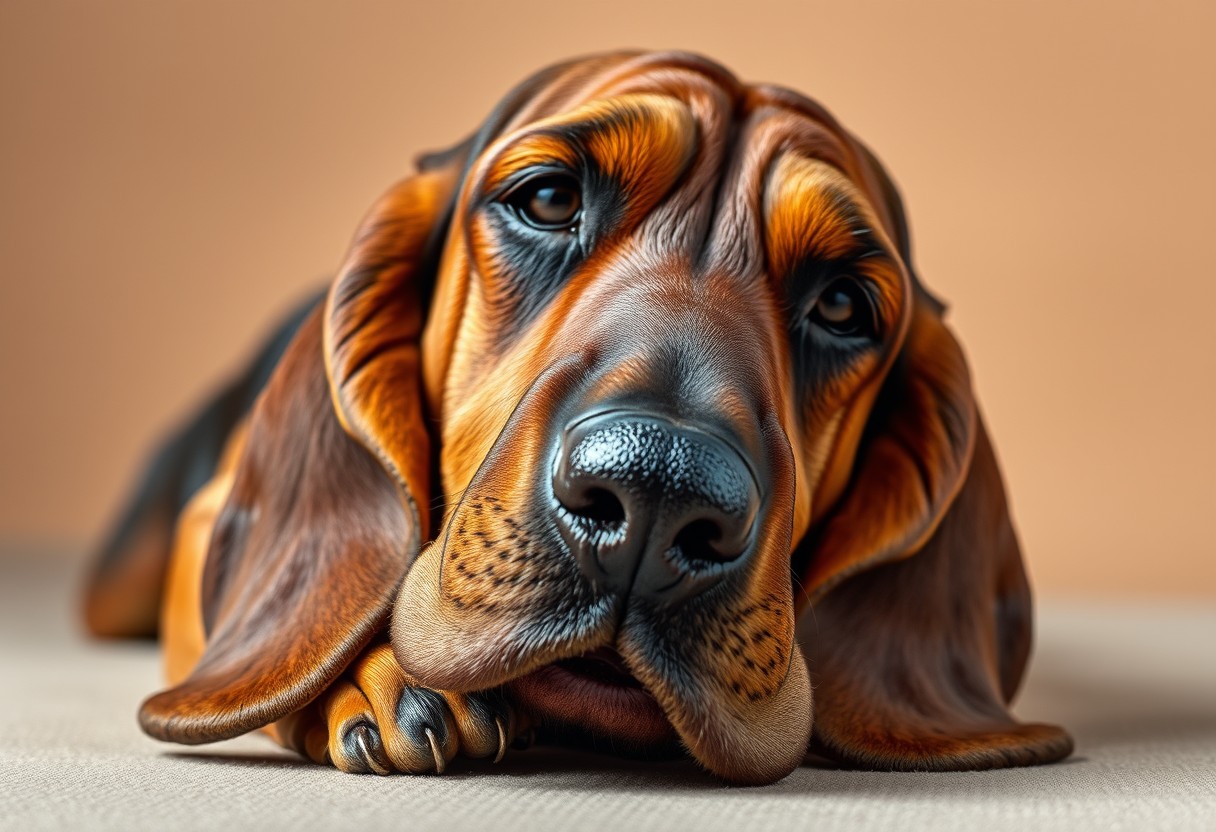
Behavioral Traits
After understanding the physical characteristics of bloodhounds, it’s important to explore their behavioral traits. Known for their unique personalities, bloodhounds exhibit a range of behaviors stemming from their heritage as tracking dogs. Your bloodhound will likely display boundless energy and a strong inclination towards scents, which can lead to a fascinating, albeit challenging, pet ownership experience.
Instinctual Pursuit
An important behavioral trait of bloodhounds is their instinctual pursuit. These dogs have an innate ability to follow scents for miles, driven by their ancestral role in tracking. When you take your bloodhound for a walk, expect it to become easily distracted by any interesting smells, as their powerful noses lead them on unpredictable adventures.
Social Interaction
Instinctual social interaction is another defining trait of bloodhounds. Bloodhounds are typically friendly and gentle, forming strong bonds with their families. They crave companionship and can be quite possessive of their loved ones. This affectionate nature makes them excellent family pets. However, it’s important to provide proper training and socialization to prevent any potential challenges with dominance or jealousy. The more positive interaction you engage in with your bloodhound, the more balanced and well-adjusted your dog will become, reinforcing their need for socialization while minimizing behavioral issues.
Maintenance and Care
Your Bloodhound’s unique skin folds require consistent maintenance to keep them healthy and prevent any irritation or infections. Regular cleaning of the skin folds, particularly around the face, ears, and underbelly, is crucial to remove dirt, moisture, and debris. It’s crucial to monitor for any signs of redness, foul odors, or excessive discharge, as these can indicate underlying issues. Additionally, routine veterinarian check-ups will help ensure your dog’s skin health is optimal.
Skin Health Considerations
To maintain your Bloodhound’s skin health, you should be vigilant about cleaning their folds regularly and monitoring for any changes. This breed is prone to skin infections due to their floppy skin, so frequent inspections are necessary. Keeping their environment clean and dry will also aid in preventing moisture buildup, which can lead to irritations.
Grooming Requirements
Health grooming for your Bloodhound goes beyond a basic brushing. Regular brushings will help remove loose fur and dirt, and frequent baths using a mild, hypoallergenic dog shampoo will keep their skin clean. Be sure to dry the skin folds thoroughly after baths to prevent moisture from getting trapped. Additionally, consistent nail trimming and ear cleaning are vital to keep your dog comfortable and free from infections.
This comprehensive grooming routine is crucial for maintaining the health of your Bloodhound’s skin and overall well-being. Regular brushings can help reduce shedding and distribute natural oils, leading to a healthier coat. Thoroughly inspecting skin folds for any signs of irritation or infection is paramount, as moist conditions can lead to serious health issues. After baths, always ensure you dry the folds completely, as trapped moisture can create an environment for bacterial growth. Adhering to these grooming practices will help you ensure your Bloodhound looks and feels their best.
Common Misconceptions
Not all people understand the unique skin structure of bloodhounds. Many assume that the excess skin is solely for aesthetic purposes or that it makes them clumsy. In reality, their skin serves vital functions in tracking scents and protecting them from environmental elements. Misconceptions can lead to misinterpretation of their physical abilities and overall well-being.
Skin and Excess Weight
For some owners, the appearance of a bloodhound’s skin might raise concerns about excess weight. However, it’s imperative to distinguish between the breed’s natural loose skin and obesity, which can lead to serious health issues. A well-fed bloodhound should have skin that folds naturally, indicating good health and not merely weight gain.
Myths vs. Facts
Facts reveal that while many myths surround bloodhound skin, understanding these can aid in responsible ownership. For instance, a common myth is that their extra skin increases the likelihood of skin infections. In truth, as long as you maintain proper hygiene and regular vet check-ups, your bloodhound’s skin can remain healthy.
This common myth can be misleading. In reality, bloodhounds are less prone to skin infections when their folds are cleaned regularly. Furthermore, you should never mistake the skin fold’s presence as a sign of laziness or lack of stamina; these dogs are incredibly active and require regular exercise. Understanding these facts can help ensure your bloodhound remains in optimal health and can properly showcase their remarkable tracking abilities.
Conclusion
As a reminder, understanding the unique physical characteristics of Bloodhounds, including their excess skin, enhances your appreciation for this remarkable breed. This skin not only aids in scent tracking but also provides protection during their searches. For more detailed insights into the reasons behind their distinctive appearance, you can explore this resource on Why do Bloodhounds Have so Much Skin. Do not forget, the Bloodhound’s unique traits are what make them exceptional companions and skilled trackers.
FAQ
Q: Why do bloodhounds have such loose skin?
A: Bloodhounds have a distinct breed characteristic of having loose, wrinkled skin. This unique feature serves multiple purposes: it enhances their scent capabilities by allowing the folds of skin to trap scent particles, improving their tracking abilities. Additionally, the loose skin helps protect their vital organs by providing an extra layer of cushioning during rough terrain or when they are working intensely in the field. The wrinkles also contribute to their expressive and lovable appearance, which has made them a popular breed among dog lovers.
Q: How does the excess skin on bloodhounds help in scent tracking?
A: The excess skin of bloodhounds plays a significant role in their famed scent-tracking abilities. When they are tracking a scent on the ground, the loose skin around their faces creates a more defined “scent funnel.” This funnel action concentrates and directs the scents towards their highly sensitive olfactory receptors. Moreover, the folds and wrinkles of their skin can contain and capture scent particles, allowing them to gather more information from the environment. This anatomical adaptation is what makes bloodhounds exceptional tracking dogs, especially in search and rescue missions.
Q: Are there any health concerns related to the loose skin of bloodhounds?
A: While the loose skin of bloodhounds is advantageous for their tracking abilities, it can lead to certain health issues. One common concern is the propensity for skin infections, as the folds can trap moisture and dirt, creating an environment favorable for bacteria and fungus. Regular grooming and cleaning of the skin folds are crucial to reduce the risk of these infections. Additionally, the loose skin can sometimes lead to eye problems, such as ectropion (where the eyelids droop away from the eye), requiring veterinary attention. Responsible ownership and regular vet check-ups can help mitigate these risks and ensure the overall health and well-being of bloodhounds.


